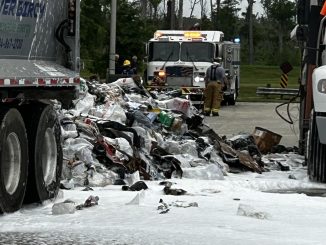
The Louisiana coast has lost 1,883 square miles of land since the 1930s. In another 50 years, it is expected to lose an additional 771 to 1,756 square miles of land . . . unless we go full speed ahead on providing the projects that have already been determined will restore our coast.
We have studied and re-studied the situation over and over again with the scrutiny often given political projects. And the delays are threatening to allow one of the major shorelines in the country to disappear into the sea.
Consider the consequences. The greatest commercial fishery in the nation will be washed away and the petroleum industry in Louisiana will experience great difficulty in finding and producing the oil that provides our lifestyles.
And besides that, the beautiful coast that we Louisianians thrive in will be lost at sea.
Now there is a potential solution to our problem. A comprehensive master plan for a sustainable coast has been devised by the State of Louisiana under the guidance of Gov. Bobby Jindal. It prescribes specific solutions that will help to restore our deteriorating coast.
Hearings and exhibits on the plan have been held this week in New Orleans, Houma and Lake Charles. Cost of the plan is expected to be $50 billion in the next 50 years when it is completed. And, according to designers, the money needed should be available for use in that time period.
Sounds unbelievable, doesn’t it? But it is the most definite plan that has come across in this time of desperation.
Details of the plan appear more certain to produce the change we need in the coastal landscape of Louisiana. It has been designed by some of the top experts in the field.
The most impressive part of the plan is the fact that it includes 11 river diversions of water and sediment to build up some of the coastal land that has washed away. They are similar to the Davis Diversion project between Luling and Ama which is one of the first such projects ever undertaken. It has done its work in bringing fresh water and some land build-up in parts of St. Charles and surrounding parishes.
There have been problems here and there with it but overall it has been a good start in what appears to be the best solution to most of our coastal problems. It represents the natural way to restore our coast just like the Mississippi River built it up in the first place.
The plan also would provide restoration of barrier islands, some of which is going on today. Gov. Jindal started this effort after the BP oil spill and, despite criticism, helped save some of the interior wetlands from oil infiltration. Such restoration is still going on and more is intended in the future.
The plan also provides for some continuation of levee protection which is more designed to keep homes and businesses intact than in restoring the Louisiana coast. But it is necessary since we allowed the coast to offer such danger in living here.
Some pumping of sediment into open water areas to increase the wetlands of Louisiana is also provided but only in cases where it is needed to help other projects that will treat the problem in a more natural way.
Nothing is more natural than these diversion projects which are the way the Mississippi River built up our coast at the outset. When the melting of ice up north increased the water level in the river, it overflowed its banks and deposited the fresh water and sediment into the surrounding areas which became the wetlands of Louisiana. This built up the delta of the river and areas of the coast.
Over the years, the overflow created the Barataria Basin, where we are located today, to where the Gulf of Mexico is today.
When the levees were built along the river to prevent that overflow and protect buildings constructed along the way, the sustenance of our basin was cut off.
Now we must recreate that overflow with diversions of fresh water and sediment that will rebuild out wetlands and continue coastal Louisiana as a growing and productive part of our state and nation. And that effort would be provided in the coastal plan that has emerged after so many years of on-again, off-again efforts to get our restoration underway.
Pay attention to what goes on in the coming days as efforts are made to put the plan into effect. And let’s make sure that the restoration of our beloved coast becomes reality.





Be the first to comment